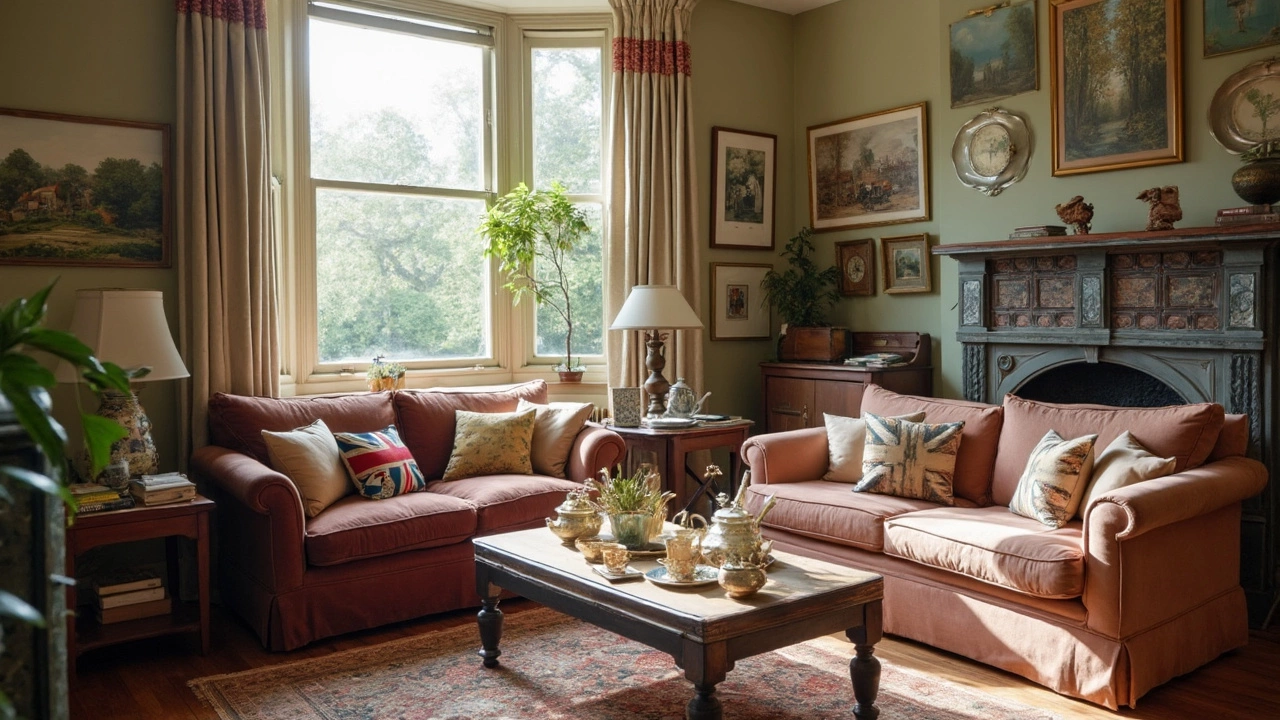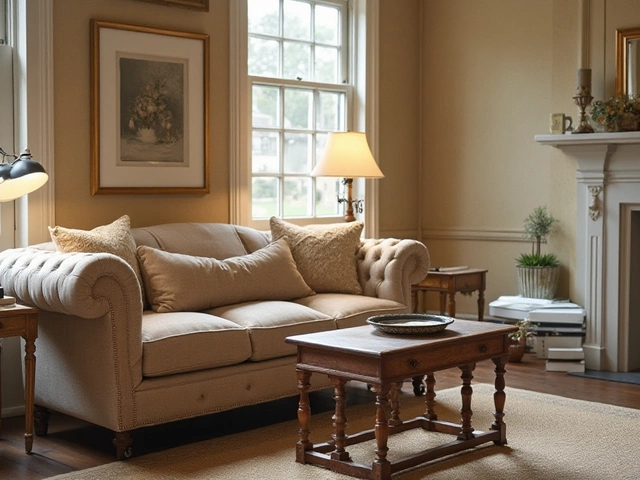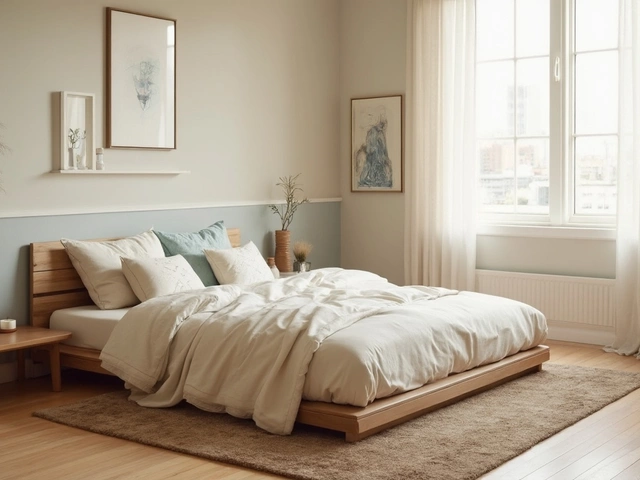Ever argued with someone about whether it’s called a sofa or a couch? For a lot of people, the terms seem totally interchangeable—just words for a comfy piece of furniture to collapse on after a long day. But if you press an interior designer or peek into some home design forums, you’ll discover there’s actually a long and slightly quirky debate behind these two words. Spurs heated conversations at family gatherings and even influences shopping decisions. Let’s break down why people care and what, if anything, sets them apart.
The Origins and Evolution of Sofa and Couch
The words “sofa” and “couch” come from two different stories, and diving into their roots is a fast way to get why folks see them as separate things. “Sofa” is borrowed from the Arabic word “suffah,” which referred to a bench covered with cushions and blankets. Back in Victorian England, a sofa meant something pretty formal—an upholstered seat with arms and a back, meant for sitting upright and minding your manners. The couch, though, has French roots, coming from “coucher,” meaning “to lie down.” Couches in the beginning were literally for lying down, not just sitting. They were chaises and fainting couches, without so much focus on upright posture.
Fast forward, and furniture makers in the 1800s and 1900s started blurring these lines. Sofas and couches morphed into more casual, cozy seats, losing some of the earlier posture rules. By the 1950s in the U.S., “couch” became the more casual term, while “sofa” picked up an air of something you’d find in a living room on display, kind of like the nice dishes you never use. In the 1980s, as TV culture swept through homes, people started saying “couch potato,” not “sofa potato.” Yet stores still loved selling “sofas” for a touch of class. See what’s happening here? The way we label furniture tells you a bit about what vibe you want in your space.
According to research by the Oxford English Dictionary, the distinction used to be clearer, but now the terms overlap so much you’ll find regional and even family-level differences. A 2020 survey by the home design site Houzz found that people in the U.S. tend to say "couch" more often, while Brits stick with "sofa." Canadians mix both, often depending on what their parents called it. Dial down to local slang, and you’ll hear “davenport” in some Midwest areas, which really throws a wrench in things.
Design Differences: Sofa vs. Couch
Is there a test that decides if a piece is a sofa or a couch? Here’s the tricky part. In practice, a lot of folks use these words for the exact same thing—your main upholstered seat in the living room. But when furniture designers and pros get picky, the sofa and couch split up a bit, and it actually comes down to small design details and intended use.
Technically, a sofa was originally fancier—larger, more structured, and always had arms and a full back. Imagine something you’d see in a period drama, maybe near some velvet drapes. Sofas are built for sitting, keeping good posture, and entertaining guests. They look structured, and often, the upholstery work and frames are sturdier and a little more “put together.” Modern sofas can come as sectionals, loveseats, or full-size, but tend to stick with this sense of “formality.”
Couch, on the other hand, is the rebel. Think softer, maybe a bit more slouchy or relaxed, sometimes even armless. Old-school couches like the classic “fainting couch” had one raised end, and were meant more for couch-surfing (literally lying down). Modern couches are built for you to pile on, maybe take a nap. They’re what most people sink into during a movie. Sometimes they have rounded arms or looser cushions. If you ask ten furniture buyers at different stores, you’ll hear different opinions, but the casual vibe belongs to the couch.
One quick tip: If you look at furniture catalogs, they almost always use “sofa” as the catch-all. Only a few stores, like Ikea, will mix in “couch” for smaller pieces or casual designs.
| Feature | Sofa | Couch |
|---|---|---|
| Typical Back/Arm Design | Full back and arms | Sometimes armless, lower backs |
| Formality | Formal | Casual |
| Purpose | Sitting, Guests | Lounging, Napping |
| Common Regions | UK, urban US | US, Australia, Canada |
Still, the lines are blurry. Plenty of people say “sofa” for their everyday Netflix couch, and designers usually won’t correct you—unless you’re at a fancy event or buying custom-built furniture.

Real-World Usage and Cultural Trends
The divide gets even more interesting when you ask people in real life. In the Northeast U.S., “couch” is king, while in fancy hotel lobbies or upscale stores like Restoration Hardware, you’ll always hear “sofa.” Younger people and renters—especially those who grew up with phrases like “couch surfing”—usually default to “couch.” Older generations might remember their parents talking about “the sofa,” especially for special occasions or “company.”
On social media, “sofa” and “couch” hashtags each have millions of hits, but “sofa” racks up more when folks are trying to show off their home upgrades or makeovers. If it’s about being cozy, watching TV shows, or pets, “couch” dominates. Language experts say both words are now so tangled up that companies usually pick whichever one matches their branding the best—a sofa sounds more boutique, a couch more down-to-earth.
A funny stat: in a 2022 Twitter poll (yep, really), about 61% of Americans picked “couch” as their default, but almost everyone admitted they use both words depending on mood or who they’re texting. Some even confessed switching to “sofa” when talking to real estate agents, but saying “couch” at home or with friends. It’s a little like soda versus pop versus cola—sometimes just a matter of hometown pride.
Cultural references matter, too. The sitcom “Friends” made the orange Central Perk couch iconic, not a “sofa.” In adverts, you’ll hear “sofa” if someone’s selling elegance or luxury, and “couch” when it’s about kicking back and relaxing.
How to Choose: Sofa or Couch for Your Space
If you’re furniture shopping and wondering which word matters most, relax—it’s the piece, not the pronunciation, that counts. Still, knowing the subtle differences can help. Are you creating a spot for entertaining, laying out a more formal living room? Look for sofas: you’ll get stiffer seats, straighter lines, and tighter upholstery. These show off taste and a bit of polish, making them perfect for impressing visitors (or your in-laws).
But if your space is made for family, pets, or just daily marathon TV shows, a couch could fit better. Couches have deeper cushions, plusher backs, and sometimes even built-in recliners. The kind of thing you and your dog can both nap on. A big tip from pro decorators: measure your room carefully, and think about how often the seat will be used, not just what it’s called. People often regret going too formal or too casual—pick for your lifestyle, not an imaginary future guest.
It also pays to check the material. Sofas usually come with higher-grade fabric or leather and may need more upkeep, while couches often use practical fabrics built for washes and spills. List the three magic questions before buying:
- Who will use it most (kids, adults, pets)?
- Is this space for show, or daily life?
- How easy is it to clean if someone spills soda or drops popcorn?
If you love a certain style but aren’t sure what it’s technically called, snap a picture and bring it to the store. Most salespeople will happily translate, and it’s way more useful than arguing about words. Remember, brands like West Elm, Crate & Barrel, and even Amazon often use “sofa” in their product listings as the default keyword.

Surprising Facts, Myths, and Buying Tips
Let’s bust a few myths. Neither “couch” nor “sofa” is wrong—they just paint a different picture. Calling it a sofa doesn’t require a dress code, and saying couch doesn’t make you less classy. The terms are nearly impossible to police in daily life, so your best bet is to pick what feels right for your space and circle.
Furniture designers do say sofas, because of their firmer builds, usually last a bit longer—think 10-15 years on average, compared to the 8-10 range for cheaper couches. Most modern sectionals can technically count as either. If you hunt antiques, you’ll spot “settee” and “davenport” thrown in too, so it helps to check pictures and close-ups rather than relying on names alone.
Want a quick test at home? If your sitting spot has arms at both ends and a back, it’s leaning sofa. If it’s low, plush, maybe even armless, it’s couch territory. Bonus: if you can nap comfortably across it, you’ve probably crossed into couch-land. If it’s so upright you feel the need to adjust your tie or smooth your dress, that’s a sofa. And if you hear someone say “I’ll crash on your davenport,” buy them a coffee and ask about their grandparents—they probably have more furniture stories to share.
Final tip: caring for both is pretty similar. Vacuum often, spot-clean spills ASAP, and rotate cushions to avoid the dreaded permanent “bum groove.” And don’t stress too much about what you call it—the most important thing is that it’s comfy, fits your space, and makes you happy at the end of the day.





